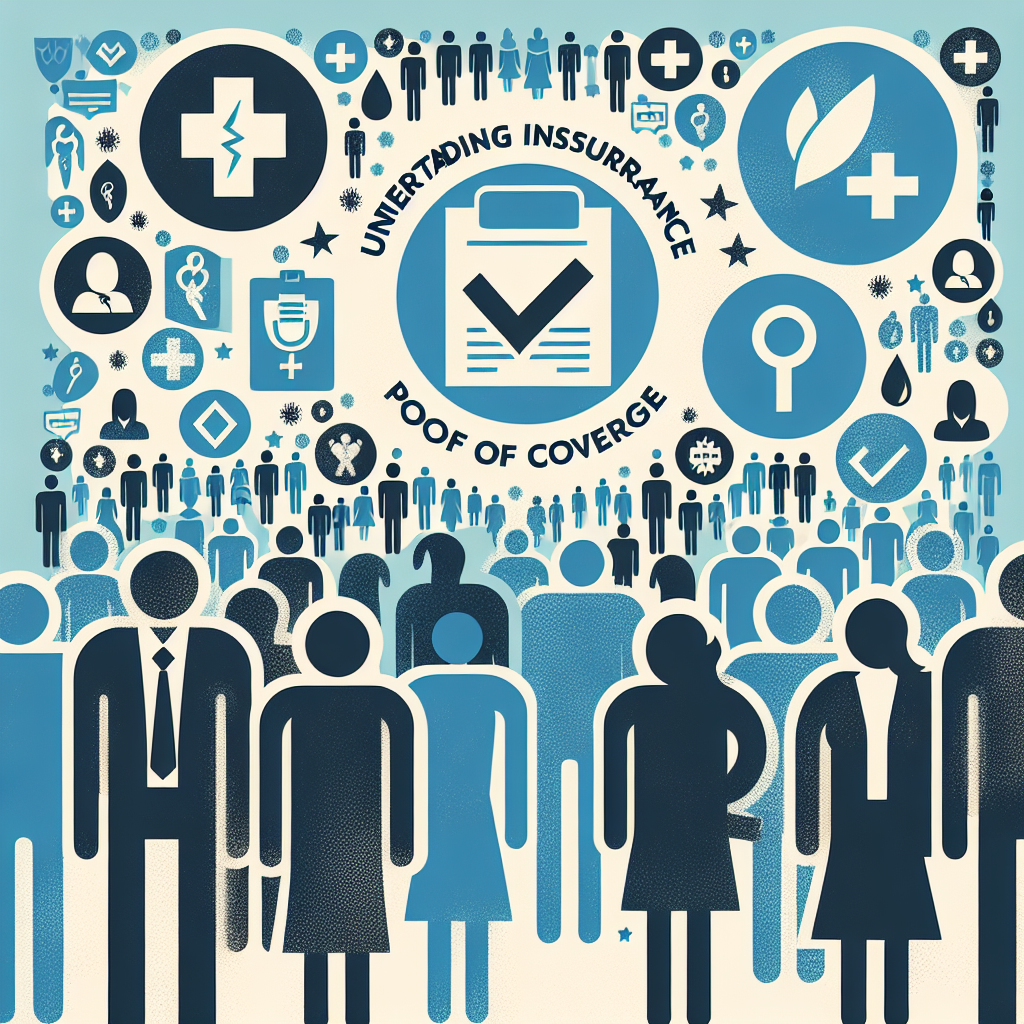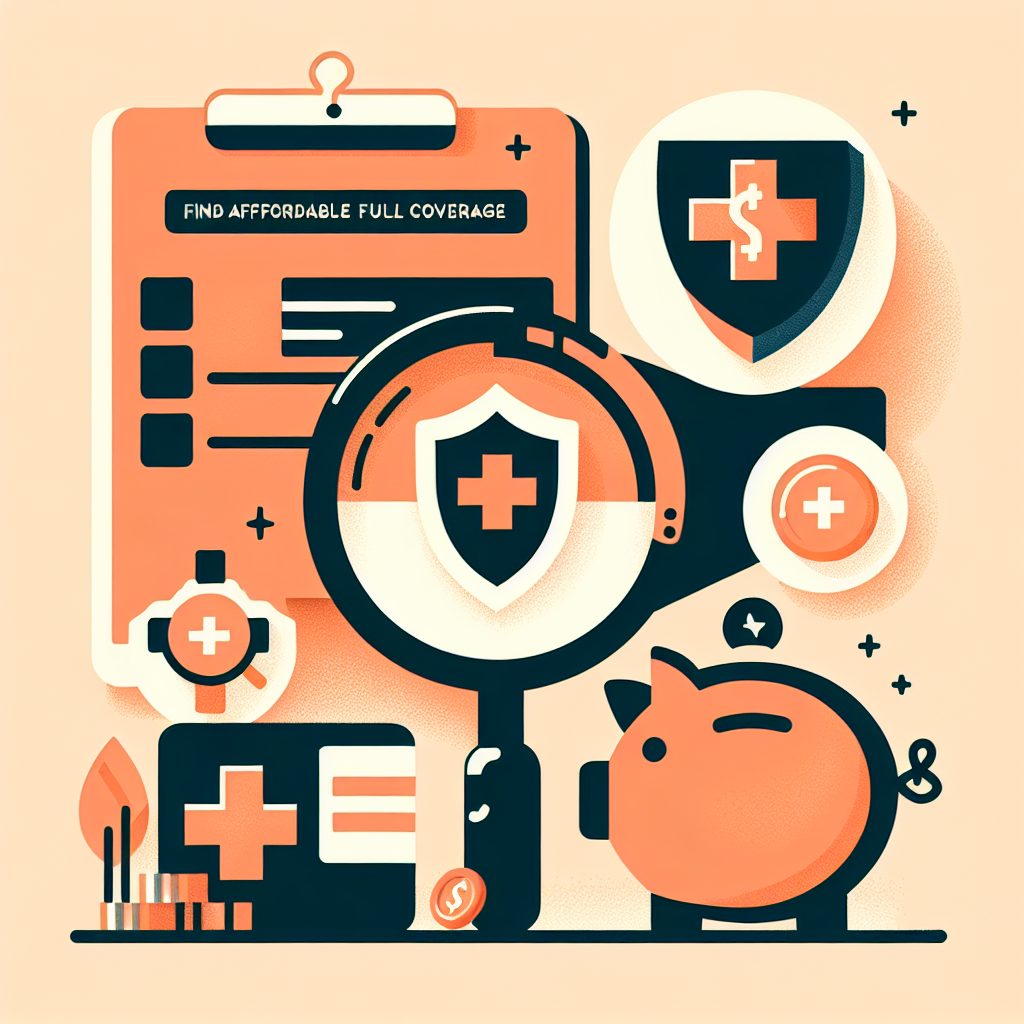Filed under Home Insurance on
Insurance Coverage for Group Homes: Costs and Policies

Running a group home is both a mission and a business. You provide safety, stability, and specialized care to people who need it most. At the same time, you manage staff, property, transportation, medication protocols, and regulatory obligations. These realities make insurance more than a line item. It is a vital part of operational resilience. This guide explains what policies you need, what drives premiums, and how to buy and manage Insurance Coverage for Group Homes with confidence.
Why Group Homes Face Distinct Insurance Risks
Group homes sit at the intersection of healthcare, housing, and social services. That position creates a unique risk profile compared to standard residential properties or outpatient clinics.
- Resident care and supervision: Incidents can involve falls, behavioral episodes, medication errors, or allegations of negligence.
- Abuse and molestation exposure: Even with excellent hiring and training, the risk requires dedicated coverage and strong controls.
- Property and operations: Kitchens, shared spaces, and 24/7 operations increase fire, slip, and equipment breakdown exposures.
- Transportation: Staff frequently drive residents to appointments and activities, creating owned or non-owned auto risk.
- Workforce challenges: High turnover and staffing shortages can raise injury rates and professional liability frequency.
- Cyber and privacy concerns: Electronic records, email, and billing systems make data security a must-have.
Because the exposure touches so many categories, no single policy can do the job. Comprehensive protection requires a coordinated program.
Core Components of Insurance Coverage for Group Homes
General Liability
This covers third-party bodily injury and property damage claims, such as visitor slip-and-fall incidents or alleged resident injury on premises. Look for broad premises and operations coverage, medical payments, and personal and advertising injury. Many carriers offer 1 million per occurrence with a 2 or 3 million aggregate as a baseline.
Professional Liability
Also called errors and omissions or healthcare professional liability, this protects you against claims arising from professional services, like medication administration, care planning, and supervision decisions. Policies may be claims-made with retroactive dates, so manage tail coverage if you switch carriers.
Abuse or Molestation Liability
This is a critical coverage specific to human services. It responds to allegations of sexual abuse, physical abuse, or exploitation. Ensure you have a separate, adequate limit rather than a low sublimit. Carriers often require background checks, chaperoning rules, incident reporting protocols, and training as conditions of coverage.
Property Insurance
Protects buildings, contents, and improvements against perils like fire, wind, theft, and vandalism. Review valuations carefully and consider replacement cost, water damage endorsements, equipment breakdown, and ordinance or law coverage if your building would need upgrades to meet current codes after a loss.
Business Income and Extra Expense
If a covered property loss forces you to relocate residents or halt operations, business income coverage can replace lost revenue and fund temporary housing or expenses. For many group homes, continuity of care is mission-critical, so calibrate limits to your actual dependency on your facility.
Workers’ Compensation
Mandatory in most states, workers’ comp covers employee injury and occupational disease. Group homes see strains, sprains, slips, and occasional resident-related incidents. Carriers may offer premium credits for safe-patient-handling programs, lifting devices, and documented training.
Commercial Auto
If you own vans or cars, you need commercial auto coverage. Even if you do not own vehicles, hired and non-owned auto liability is essential because staff may drive personal cars to transport residents or run errands. Screen motor vehicle records and enforce driver safety policies.
Cyber Liability and Privacy
Cyber policies can cover data breaches, ransomware, phishing losses, and regulatory notification costs. With resident health information in play, the exposure is significant. Look for coverage for incident response, forensics, legal counsel, and business interruption caused by cyber events.
Employment Practices Liability (EPLI)
Protects against claims of wrongful termination, discrimination, harassment, and wage-and-hour allegations. In a tight labor market, EPLI is increasingly relevant for group homes. Request third-party coverage to extend protection to claims by non-employees such as residents or visitors.
Umbrella or Excess Liability
An umbrella adds limits above your primary general liability, auto, and employers’ liability. Social inflation and larger verdicts make excess liability a prudent investment, especially for multi-site operations or organizations with transportation exposures.
Directors and Officers (D&O)
For nonprofit group homes, D&O protects board members and executives from management liability claims such as mismanagement, breach of fiduciary duty, or governance disputes. Consider adding fiduciary liability if you sponsor employee benefit plans.
What Does Insurance Cost for a Group Home?
Premiums vary widely based on services, census, location, and claim history. Instead of fixating on an average that may not fit your model, it helps to understand cost drivers and typical program components. When you evaluate the cost of Insurance Coverage for Group Homes, consider both premium and the financial protection you receive in a severe claim.
Key Cost Drivers
- Resident profile and acuity: Higher-acuity residents and complex medical needs raise professional liability risk.
- Bed count and staffing ratios: More residents and 24/7 operations increase exposure and payroll-driven premiums.
- Services provided: Medication administration, mobility assistance, behavioral health, and transportation add complexity.
- Facility characteristics: Building age, construction type, sprinklers, alarms, and location influence property rates.
- Claims history: Frequency and severity of past incidents, especially abuse or professional claims, affect pricing and eligibility.
- State regulations and litigation climate: Jurisdictions differ in rate adequacy, tort environment, and mandated limits.
- Risk management maturity: Documented training, incident reporting, quality assurance, and safety investments may earn credits.
- Coverage structure: Higher limits, lower deductibles, and special endorsements increase cost but also expand protection.
Illustrative Premium Ranges
The ranges below are illustrative, not quotes. Actual pricing depends on underwriting details and market conditions.
- General liability and professional liability combined: Commonly purchased together for human services. Many small homes see annual premiums in the low to mid four figures for baseline limits, with larger or higher-acuity operations paying more.
- Abuse and molestation coverage: Can add a meaningful charge, especially for higher limits and broader defense terms.
- Property with business income: Driven by building valuation and protection class; expect higher costs for older, unsprinklered structures or catastrophe-exposed regions.
- Workers’ compensation: Rated on payroll and job class; ergonomics and return-to-work programs can materially lower experience modifiers over time.
- Auto or hired/non-owned auto: Even if you do not own vehicles, non-owned auto liability is typically affordable relative to the risk it addresses.
- Cyber and EPLI: Often packaged or available as separate policies with entry-level premiums that scale with revenue and record counts.
As commercial insurance markets have tightened in recent years, industry associations and the National Association of Insurance Commissioners have reported firming rates across liability lines. Human services organizations may see underwriters focus more on abuse prevention, clinical protocols, and documentation when determining eligibility and price.
Choosing Policy Limits and Structures
Limits should reflect your potential loss scenarios and contract requirements. A one-size approach rarely fits every operation.
- General and professional liability: 1 million per occurrence with 3 million aggregate is common; consider higher limits if you operate multiple homes, provide transportation, or rely on government contracts that mandate specific thresholds.
- Abuse coverage: Avoid minimal sublimits that could be exhausted by defense costs alone. Seek separate, meaningful limits with defense outside the limit where available.
- Property and business income: Use replacement cost valuations and calculate realistic downtime based on restoration times and relocation complexity.
- Umbrella: Often purchased in 1 to 5 million increments, but the right level depends on your asset base, contracts, and risk appetite.
- Deductibles and self-insured retentions: Higher retentions can lower premium but require strong cash flow and claims handling capacity.
Check for exclusions that can hollow out coverage, such as broad assault and battery exclusions, communicable disease exclusions, or narrow professional services definitions that do not match your actual operations. Align retroactive dates for claims-made policies and secure extended reporting (tail) if you change carriers or cease operations.
Licensing Rules and Contract Requirements
Many states require proof of insurance as a condition of licensing group homes. Requirements typically include general liability, but funding agencies and referral partners may also require professional liability, abuse coverage, auto, and workers’ compensation. You may be asked to provide certificates of insurance naming the agency as additional insured and to carry primary and non-contributory wording with waivers of subrogation. Review these requests carefully to avoid unintended gaps or conflicts across policies.
If you are accredited by organizations focused on human services, expect enhanced attention to risk management, documentation, and incident reporting. Strong compliance frameworks make a positive impression on underwriters and can help improve market access.
How to Buy Insurance Coverage for Group Homes
Prepare a Complete Underwriting Package
- Operations overview: Services offered, resident demographics, staffing model, and supervision ratios.
- Policies and procedures: Medication management, incident reporting, abuse prevention, transportation, and emergency plans.
- Training and background checks: Frequency, curriculum, and monitoring; documentation is key.
- Loss runs: Five years if available, including narrative corrective actions for each significant claim.
- Property schedule: Addresses, construction details, square footage, valuations, and protection systems.
- Drivers list and MVR standards: Include written fleet safety rules even if you do not own vehicles.
- Cyber controls: MFA on email and remote access, backups, endpoint protection, and phishing training.
Select a Specialist Broker or Program
Work with a broker who regularly places human services accounts. Specialist programs understand the nuances of resident care and can access carriers that tailor terms for your risks. Ask about their experience with abuse coverage, claims advocacy, and risk control resources.
Compare Quotes Beyond Price
- Coverage breadth: Are abuse and professional liability included at adequate limits?
- Defense terms: Is defense inside or outside the limit? Are panel counsel requirements reasonable?
- Exclusions: Watch for assault and battery, punitive damages, and communicable disease carve-outs.
- Claim triggers: Claims-made vs. occurrence for liability; retro dates and tail options matter.
- Endorsements: Additional insured, primary and non-contributory, and waiver of subrogation as contracts require.
Bind, Implement, and Review
Once you bind coverage, calendar renewal timelines, complete necessary audits, and hold a kickoff meeting with your broker and carrier risk control team. Align your incident reporting process with carrier expectations to speed response if a claim occurs.
Practical Ways to Reduce Premiums and Claims
- Abuse prevention program: Comprehensive background checks, reference verification, chaperone policies, and mandatory reporting training.
- Medication safety: Double-check systems, electronic MARs, locked storage, and staff competency checks.
- Slip-and-fall prevention: Non-slip flooring, lighting improvements, handrails, and documented housekeeping.
- Ergonomics: Lift assists, transfer training, and two-person rules for residents needing physical support.
- Transportation safety: Driver training, MVR monitoring, no-phone policies, and vehicle maintenance logs.
- Cyber hygiene: Multifactor authentication, regular backups, endpoint protection, and quarterly phishing tests.
- Incident analytics: Track near-misses and trends; close the loop with corrective actions and staff feedback.
- Contract review: Ensure vendor agreements include appropriate insurance and indemnification requirements.
Carriers increasingly reward documented risk improvements with credits and broader terms. Even small investments, such as upgraded alarms or basic cyber controls, can pay for themselves via fewer losses and better underwriting outcomes.
Claims Handling and Documentation
When an incident happens, speed and accuracy matter. A consistent process protects residents, preserves evidence, and supports coverage.
- Stabilize and care for the resident: Address medical needs first and document actions taken.
- Notify leadership and the carrier: Follow your policy’s claim reporting requirements promptly.
- Preserve records: Incident reports, witness statements, video, medication logs, and staffing rosters for the shift in question.
- Follow mandatory reporting laws: For suspected abuse, follow state timelines and protocols.
- Communicate with families and authorities: One designated spokesperson; maintain clear, factual updates.
- Conduct a post-incident review: Implement corrective actions and track completion.
Work with your broker to coordinate with defense counsel and claims adjusters. Maintain confidentiality consistent with privacy laws and internal policies.
Trends Shaping Insurance for Group Homes
- Social inflation and nuclear verdicts: Larger jury awards have pushed carriers to reevaluate limits and pricing in liability lines.
- Staffing pressures: Overtime and agency utilization can elevate incident rates and workers’ comp losses.
- Cyber escalation: Ransomware and business email compromise continue to target healthcare-adjacent organizations.
- Weather and property volatility: Severe convective storms, wildfire, and freeze events influence property deductibles and availability in some regions.
- Data-driven underwriting: Carriers increasingly request metrics on incidents, training completion, and quality assurance to differentiate accounts.
- Technology adoption: Fall-detection sensors, electronic MARs, and telehealth may reduce risk but also introduce new cyber considerations.
Understanding these trends helps you position your organization for better terms when renewing Insurance Coverage for Group Homes, particularly in a competitive market.
Frequently Asked Questions
How much does Insurance Coverage for Group Homes cost?
Costs depend on resident acuity, services, locations, claims history, and limits. Many small homes pay a few thousand dollars annually for core liability and property, while larger or higher-acuity operations can pay substantially more. Underwriters price best when provided with complete operations, training, and loss information.
What policies are included in Insurance Coverage for Group Homes?
Most programs combine general liability, professional liability, abuse coverage, property, business income, workers’ compensation, auto or hired/non-owned auto, cyber, EPLI, and an umbrella. Nonprofits may add D&O and fiduciary liability.
Is abuse coverage optional?
While not always legally mandated, abuse coverage is essential for human services providers. Many funders and referral sources require it. Without it, you may face uncovered, catastrophic expenses.
Occurrence or claims-made for professional liability?
Both exist, but professional liability is often claims-made. Monitor your retroactive date and secure tail coverage if you switch carriers or close operations so future claims from past services remain insured.
How do I choose appropriate limits?
Consider potential worst-case scenarios, contract requirements, assets at risk, and your risk tolerance. A broker with human services experience can model scenarios and recommend limits based on comparable organizations.
Can I reduce premium without sacrificing protection?
Yes. Improve documentation, implement targeted safety measures, increase deductibles you can afford, and bundle policies with a program carrier that understands your operations. Demonstrated risk improvements can unlock credits and broader terms.
What underwriting information will carriers expect?
Operations summaries, resident profiles, incident logs, training records, abuse prevention policies, five years of loss runs, property details, and for cyber, controls like MFA, backups, and security awareness training.
What happens if I transport residents in staff-owned vehicles?
Secure hired and non-owned auto liability, verify drivers’ personal insurance, run MVRs, and implement a formal transportation policy. Some carriers require minimum personal auto limits and proof of coverage.
A Step-by-Step Example: Building a Right-Sized Program
Consider a single-location, six-bed home serving adults with mild to moderate support needs. The operator maintains current licensing, conducts annual abuse-prevention training, uses electronic medication records, and provides local transportation in a staff-owned vehicle.
- Core liability: General and professional liability combined at 1 million per occurrence and 3 million aggregate, with separate abuse limits.
- Property: Replacement cost on the building and contents with business income coverage for at least six months.
- Workers’ compensation: Based on payroll with a focus on transfer training and lifting aids to reduce injuries.
- Hired/non-owned auto: To protect the organization when staff drive personal vehicles for residents.
- Cyber: Entry-level limits addressing breach response and ransomware, paired with MFA and backups.
- EPLI: To manage employment-related risks, ideally with third-party coverage.
- Umbrella: An extra 1 to 2 million in excess limits for peace of mind.
A larger, multi-site operation with a higher-acuity population might increase liability and abuse limits, add owned auto, consider a higher umbrella, and invest heavily in risk analytics and staff retention programs. In both cases, a knowledgeable broker can help map coverage to your realities.
How to Make the Market Work for You
Insurers favor transparency, proactive risk management, and operational excellence. When marketing your account, present evidence of quality that underwriters value.
- Quality metrics: Share incident trends, corrective actions, and training completion rates.
- Culture of safety: Demonstrate leadership involvement, safety committees, and open reporting.
- Auditable processes: Provide documented policies, checklists, and signed training acknowledgments.
- Continuous improvement: Show how you review lessons learned and close gaps rapidly.
These elements not only improve resident outcomes but also strengthen your position when renewing Insurance Coverage for Group Homes in a challenging market cycle.
Common Pitfalls to Avoid
- Assuming tenants’ policies cover residents: Personal renters’ policies do not replace organizational liability or property insurance.
- Underinsuring property: Actual rebuild costs often exceed tax assessments; validate valuations regularly.
- Ignoring sublimits and exclusions: Low abuse sublimits or broad communicable disease exclusions can leave major gaps.
- Letting retro dates lapse: A reset can leave prior acts uncovered in claims-made policies.
- Skipping cyber: Even small organizations experience phishing and funds-transfer fraud.
Putting It All Together
Protecting a group home requires more than a stack of policies. It requires an integrated approach that fits the way you care for residents, manage staff, and maintain your facilities. When you structure Insurance Coverage for Group Homes thoughtfully—combining the right limits, clear contracts, and everyday risk practices—you reduce volatility and gain the freedom to focus on your mission.
Start by assessing your exposures, documenting your controls, and partnering with a broker who places human services accounts every day. Compare coverage terms as carefully as price, and revisit your program annually as regulations, staffing, and resident needs evolve. With a strong insurance foundation, your organization can navigate uncertainty and continue delivering life-changing care.
This article provides general information and is not legal or insurance advice. Work with licensed professionals to evaluate policies and requirements specific to your state and operations. If you need help scoping or benchmarking Insurance Coverage for Group Homes, speak with a specialist who understands your clinical risk profile, funding contracts, and licensing environment.





